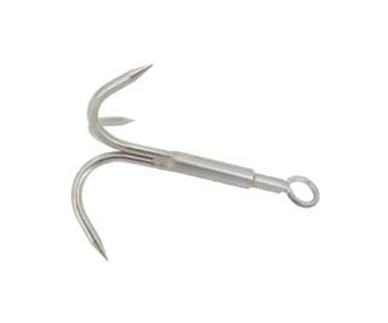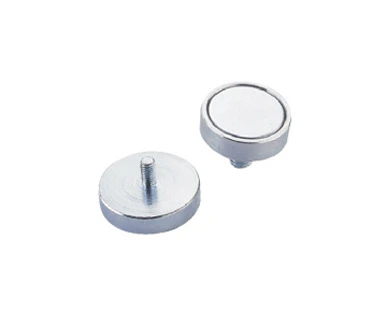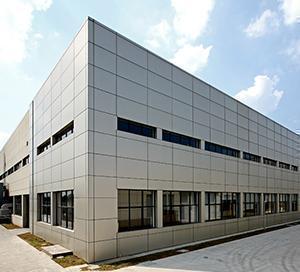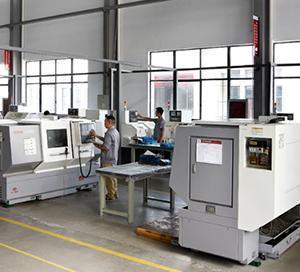Are you looking to optimize your industrial processes while maximizing your return on investment? Industrial magnetic filtration might be the game-changing solution you need. Industrial magnetic filtration systems are powerful tools that can remove ferrous contaminants as small as 0.5 micrometers from your fluids, significantly extending equipment life and reducing maintenance costs. With magnetic field strengths reaching up to 14,000 gauss, these systems offer superior filtration compared to traditional methods. Whether you're managing a manufacturing plant, running hydraulic systems, or operating large diesel engines, choosing the right magnetic filtration system is crucial for your operation's success. But with various options available - from basic mag-plugs to advanced flow-through filters - making the right choice can be overwhelming. In this comprehensive guide, we'll walk you through everything you need to know about selecting and implementing the perfect magnetic filtration system for your specific needs. Let's dive into the world of industrial magnetic filtration and discover how it can transform your operations.
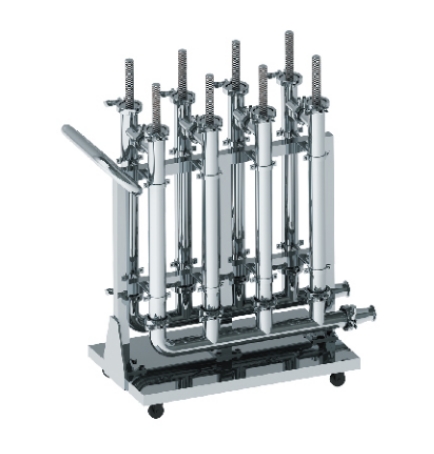
Key Takeaways:
· - Magnetic filtration systems can effectively remove ferrous contaminants down to 0.5 micrometers, utilizing magnetic fields up to 14,000 gauss for superior performance compared to traditional methods.
· - These systems come in various formats, from simple magnetic plugs to sophisticated automated systems, including full-flow and side-stream filtration options.
· - The technology offers significant advantages over traditional filtration methods, eliminating the need for disposable filters while reducing maintenance costs and environmental impact.
· - Implementation across various industrial applications, including manufacturing processes, hydraulic systems, and heat exchangers, can lead to substantial cost savings and extended equipment life.
· - The choice between manual and automated systems depends on your specific industrial process requirements and desired level of maintenance involvement.
Understanding Industrial Magnetic Filtration
Industrial magnetic filtration represents a cutting-edge approach to removing ferrous contaminants from industrial fluids and processes. This innovative technology harnesses the power of magnetic fields to capture and eliminate unwanted particles, ensuring cleaner operations and enhanced system performance.
What Makes Magnetic Filtration Unique
Unlike traditional filtration methods, magnetic filtration uses powerful magnetic fields that can reach up to 14,000 gauss - significantly stronger than common magnets. This remarkable strength allows these systems to capture particles as small as 0.5 micrometers, making them incredibly effective at maintaining fluid purity.
Core Components and Functionality
The system typically consists of:
- High-strength magnetic elements
- Specialized housing units
- Flow optimization channels
- Collection zones for captured particles
These components work together to create an efficient filtration process that requires minimal maintenance while delivering maximum results.
The technology operates continuously, removing harmful ferrous particles from industrial fluids without creating pressure drops or flow restrictions. This ensures smooth operations while maintaining optimal system performance.
(Key takeaway Industrial magnetic filtration uses powerful magnetic fields to effectively remove ferrous contaminants from industrial processes, offering a sustainable and efficient filtration solution.)
Traditional Filtration Methods and Their Limitations
Traditional filtration methods have long been the backbone of industrial fluid purification, relying primarily on barrier-based systems to capture and remove contaminants. These conventional approaches typically involve using materials like paper, cloth, or synthetic membranes to physically trap particles.
Common Traditional Filtration Methods
- Paper filters that capture particles through a mesh-like structure
- Cloth filters utilizing woven materials for straining
- Membrane filters with specific pore sizes
- Cartridge filters designed for periodic replacement
- Screen filters for larger particle removal
While these barrier methods have served industries for decades, they come with inherent limitations that can impact operational efficiency and cost-effectiveness.
Key Limitations of Traditional Methods
The primary drawback of traditional filtration methods is their disposable nature. These filters require frequent replacement, leading to:
- Increased operational costs due to continuous filter purchases
- Regular system downtime for maintenance
- Higher labor costs for filter changes
- Significant waste generation from used filters
- Potential environmental impact from disposal
Additionally, barrier methods often face challenges with:
- Pressure drop across the filter medium
- Reduced flow rates as filters become clogged
- Inconsistent filtration quality over time
- Limited ability to capture sub-micron particles
- Risk of filter breakthrough during peak loads
(Key takeaway Traditional filtration methods, while widely used, face significant limitations including high operational costs, frequent maintenance requirements, and environmental concerns due to their disposable nature.)
Common Challenges in Industrial Filtration
Industrial filtration systems face several persistent challenges that can impact operational efficiency and cost-effectiveness. These issues often lead to decreased productivity and increased maintenance requirements.
Clogging and Reduced Flow Rates
Disposable filters frequently experience clogging issues, especially when dealing with high particle concentrations. This results in reduced flow rates and increased pressure drops across the system, leading to decreased operational efficiency.
High Replacement Costs
Traditional cartridge filters require regular replacement, creating ongoing expenses for new filter elements. Used filters also generate substantial waste, contributing to environmental concerns and disposal costs.
Inconsistent Performance
Filter performance often deteriorates over time, leading to inconsistent filtration quality. This variability can affect product quality and machine reliability, particularly in precision manufacturing processes.
Maintenance Downtime
Regular filter changes and system maintenance result in significant production downtime. This not only impacts productivity but also increases labor costs associated with filter replacement and system cleaning.
(Key takeaway)Industrial filtration systems face multiple challenges including clogging, high replacement costs, inconsistent performance, and maintenance-related downtime that affect operational efficiency and bottom-line results.
How Magnetic Filtration Works
Magnetic filtration harnesses the power of magnetic fields to effectively remove ferrous particles from industrial fluids. This innovative technology operates on the principle of magnetic separation, utilizing high-intensity magnetic fields to attract and capture contaminating particles.
The Core Mechanism
The process begins when contaminated fluid passes through a magnetic filter containing powerful magnetic elements. These elements generate a strong magnetic field with flux density often exceeding 14,000 gauss - significantly stronger than common magnets. As the fluid flows through, the magnetic field creates a gradient that attracts ferrous and paramagnetic particles.
Magnetic Field Interaction
The strength of particle attraction depends on several factors:
- The intensity of the magnetic field
- The magnetic susceptibility of particles
- The flow rate of the fluid
- The size and mass of contaminants
The magnetic separation process becomes more effective with stronger magnetic fields and slower flow rates, allowing for optimal particle capture.
Advanced Filtration Technology
Modern magnetic filters employ sophisticated designs that maximize the contact between fluid and magnetic surfaces. The mechanism of particle separation involves:
- Strategic placement of magnetic elements
- Optimized flow patterns
- Enhanced magnetic flux density
- Multiple collection points
This advanced configuration ensures thorough filtration while maintaining consistent fluid flow through the system.
(Key takeaway Magnetic filtration works by using powerful magnetic fields to attract and capture ferrous particles from industrial fluids, with effectiveness determined by field strength, particle properties, and system design.)
Particle Separation Process
The magnetic filtration process efficiently removes ferrous particles through a sophisticated mechanism. When contaminated fluid passes through the magnetic filter, the high-intensity magnetic field attracts and captures ferrous particles of various sizes.
Larger particles (>5 microns) are immediately captured by the strong magnetic force. These particles often form chain-like structures along the magnetic field lines, creating collection points for smaller particles.
The smaller particles (1-5 microns) are gradually trapped as they flow through the system. The magnetic gradient pulls these fine particles toward the collection areas, where they accumulate with larger particles.
Even sub-micron particles (<1 micron) can be captured through a process called magnetic agglomeration. As these tiny particles cluster together, they become more susceptible to magnetic attraction and are eventually trapped.
The trapped particles form a protective matrix that enhances the filter's efficiency over time. This matrix helps capture non-ferrous particles through mechanical filtration, making the system increasingly effective.
(Key takeaway) The particle separation process in magnetic filtration works through a multi-stage mechanism that effectively captures ferrous particles of all sizes, from large debris to sub-micron contamination.
Types of Magnetic Filtration Systems
Industrial magnetic filtration systems come in various configurations, each designed to meet specific operational needs and requirements. These systems can be broadly categorized into several distinct types, offering different approaches to magnetic separation.
Magnetic Rod Systems
These systems utilize powerful rod-shaped magnets installed within the fluid flow. The magnetic rods create a strong magnetic field that effectively captures ferrous particles as the fluid passes through. They're particularly effective in high-flow applications and can be easily cleaned by removing and wiping the magnetic rods.

Magnetic Plugs and Drain Magnets
Simple yet effective, these systems are installed in drain ports or sumps. They capture ferrous debris before it can circulate through the system. While basic in design, they provide a cost-effective first line of defense against contamination.
Flow-Through Magnetic Filters
These sophisticated systems incorporate multiple magnetic elements arranged in a housing through which the fluid flows. They offer:
- Maximum contact between fluid and magnetic surfaces
- Enhanced particle capture efficiency
- Optimal flow distribution
- Easy maintenance access
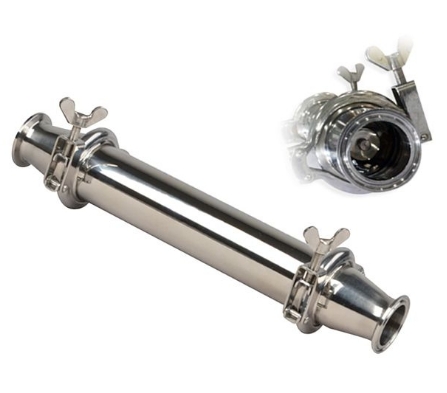
Magnetic Wrap Systems
These systems use magnetic wraps or sleeves that fit around existing pipework. They're ideal for retrofitting existing systems and require minimal modification to current setups. The magnetic field penetrates the pipe wall to capture ferrous particles in the fluid flow.
(Key takeaway) Industrial magnetic filtration systems come in various types - from simple magnetic plugs to sophisticated flow-through systems - each designed for specific applications and requirements.)
Manual Filtration Systems
Manual magnetic filtration systems are straightforward yet highly effective solutions for industrial filtration needs. These systems typically consist of magnetic plugs and cleanable filter screens that can be easily maintained by operators.
Components of Manual Systems
- Magnetic plugs with high-strength neodymium magnets
- Removable filter screens for easy cleaning
- Housing units designed for quick access
- Manual cleaning tools and equipment
Operation Process
The system works by allowing fluid to pass through the magnetic elements, which capture and hold ferrous particles. The collected debris forms a protective cake around the magnetic cores, enhancing the filtration efficiency over time.
Maintenance Requirements
Regular cleaning is essential for optimal performance. Operators need to:
- Remove the magnetic elements
- Wipe off collected debris
- Clean the filter screens
- Inspect the magnetic strength
- Reinstall the components
The simplicity of manual systems makes them ideal for smaller operations or as supplementary filtration in larger facilities. Their cost-effectiveness and reliability make them a popular choice for businesses starting with magnetic filtration technology.
(Key takeaway)Manual filtration systems offer a simple yet effective solution for industrial filtration needs, requiring minimal training and providing reliable performance through regular maintenance.
Automated Filtration Systems
Automated magnetic filtration systems represent a significant advancement in industrial filtration technology. These sophisticated systems operate continuously without manual intervention, making them ideal for high-volume operations.
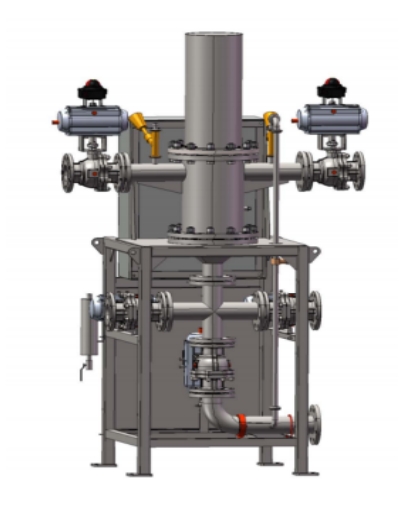
Key Components
- Automated cleaning mechanisms
- Integrated control systems
- Continuous monitoring capabilities
- Self-purging features
Operation Process
The system automatically removes collected particles when the magnetic cores reach capacity. This process typically involves:
- Automatic diversion of fluid flow
- Power-assisted cleaning cycles
- Controlled particle collection
- Immediate return to filtration mode
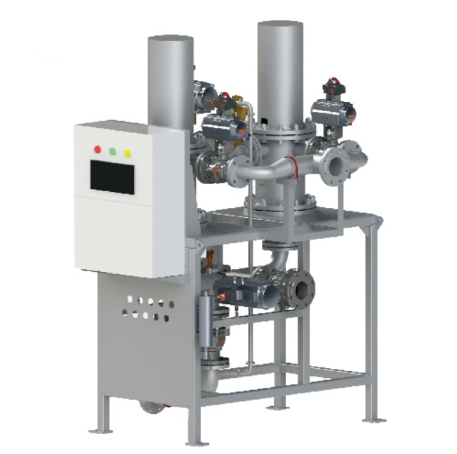
Advantages
Full-flow and side-stream automated filters offer several benefits:
- Reduced labor costs through minimal operator involvement
- Consistent filtration performance
- Zero production downtime during cleaning
- Real-time monitoring and reporting capabilities
These systems are particularly effective in applications requiring 24/7 operation, where manual cleaning would be impractical or costly. The integration of automation ensures optimal filtration efficiency while minimizing human intervention.
(Key takeaway) Automated magnetic filtration systems provide continuous, efficient operation with minimal maintenance requirements, making them ideal for high-volume industrial applications.)
Key Benefits of Magnetic Filtration
Magnetic filtration systems offer numerous advantages that make them an increasingly popular choice for industrial applications. These benefits extend beyond simple particle removal, providing comprehensive solutions for modern industrial challenges.
Improved System Performance
The advanced particle capture capabilities of magnetic filtration significantly enhance overall system performance. By effectively removing ferrous particles as small as 0.5 micrometers, these systems help maintain optimal equipment operation. This results in reduced wear and tear on critical components, leading to fewer breakdowns and extended machinery life.
Cost-Effective Solution
While the initial investment in magnetic filtration may be higher than traditional methods, the cost saving potential is substantial over time. These systems eliminate the need for frequent filter replacements, reducing both material costs and maintenance downtime. Studies show that businesses can achieve up to 40% reduction in maintenance expenses through effective magnetic filtration.
Enhanced Fluid Quality
Magnetic filtration excels at maintaining fluid cleanliness, particularly in oil-based systems. By continuously removing ferrous contaminants, these systems extend fluid life significantly. This results in reduced fluid replacement frequency and improved system efficiency, contributing to both economic and environmental benefits.
Sustainable Operation
The environmental impact of magnetic filtration is notably positive. Unlike disposable filters that contribute to landfill waste, magnetic filters are reusable and have a long service life. They operate without additional energy requirements and help reduce the carbon footprint of industrial operations through improved system efficiency.
Minimal Maintenance Requirements
Magnetic filters are designed for easy cleaning and maintenance. The simple cleaning process typically involves removing the magnetic core, wiping off collected particles, and reinserting the core. This straightforward maintenance routine requires minimal downtime and can often be performed during regular service intervals.
(Key takeaway) Magnetic filtration systems deliver substantial benefits across performance, cost-effectiveness, sustainability, and maintenance aspects, making them an invaluable investment for industrial applications.
Economic Advantages
The economic benefits of magnetic filtration systems extend far beyond their initial investment. These systems offer substantial cost savings through multiple channels, making them a financially sound choice for industrial operations.
Reduced Maintenance Costs
By effectively removing ferrous particles, magnetic filters significantly decrease the frequency of equipment maintenance. This translates to fewer production interruptions and lower labor costs associated with system upkeep.
Extended Equipment Lifespan
The continuous removal of harmful particles helps protect vital machinery components. Studies show that implementing magnetic filtration can extend equipment life by up to 50%, resulting in delayed replacement costs and improved ROI.
Minimal Replacement Expenses
Unlike traditional filters that require regular replacement, magnetic filters are permanent solutions. This eliminates the recurring costs of purchasing disposable filters, making them more cost-effective over their lifetime use.
Energy Efficiency Gains
Magnetic filtration systems operate with minimal pressure drop, reducing the energy consumption of pumps and related equipment. This leads to lower operational costs and improved system efficiency.
(Key takeaway) Magnetic filtration systems provide significant long-term cost savings through reduced maintenance, extended equipment life, eliminated replacement costs, and improved energy efficiency.)
Environmental Impact
Magnetic filtration systems stand out as an environmentally conscious choice in industrial filtration. These systems significantly reduce waste by eliminating the need for disposable filter elements that often end up in landfills.
Sustainable Fluid Management
By effectively removing ferrous contaminants, magnetic filtration extends fluid life considerably. This means less frequent oil changes and reduced disposal of contaminated fluids, directly contributing to environmental preservation.
Zero Waste Operation
Unlike traditional filters that require regular replacement, magnetic filters are cleanable and reusable. The collected ferrous particles can be recycled, creating a closed-loop system that aligns with sustainable manufacturing practices.
Energy Efficiency
Magnetic filtration operates without additional energy requirements, as it relies solely on magnetic fields. This passive operation translates to a smaller carbon footprint compared to powered filtration systems.
(Key takeaway) Magnetic filtration promotes environmental sustainability through waste reduction, fluid conservation, and energy-efficient operation.
Industrial Applications and Use Cases
Industrial magnetic filtration systems have proven their worth across numerous industries, revolutionizing contamination control and system efficiency. Let's explore some key applications where these systems excel.
Manufacturing and Metalworking
The manufacturing sector heavily relies on magnetic filtration for coolant and cutting fluid maintenance. These systems effectively remove metal chips, swarf, and fine particles generated during machining processes, extending tool life and improving surface finish quality.
Power Generation
In power plants, magnetic filters protect critical heat exchangers and cooling systems. They remove iron oxide and other magnetic contaminants from closed-loop systems, preventing scaling and maintaining optimal heat transfer efficiency.
Automotive Industry
Vehicle manufacturers utilize magnetic filtration in various processes, from parts washing to transmission fluid maintenance. These systems help maintain fluid cleanliness, reducing wear on critical components and extending equipment life.
Food and Beverage Processing
Magnetic filters play a crucial role in protecting product quality by removing fine ferrous particles from liquids, oils, and semi-liquid products. This ensures both product purity and equipment protection.
Oil and Gas
The oil and gas sector employs magnetic filtration to protect expensive equipment like pumps and valves. These systems effectively remove wear particles and drilling debris, significantly reducing maintenance costs and equipment downtime.
(Key takeaway) Industrial magnetic filtration systems offer versatile solutions across multiple sectors, from manufacturing to food processing, providing both equipment protection and product quality assurance.
Implementation Strategies for Maximum ROI
Maximizing your return on investment with magnetic filtration requires a strategic approach that combines proper system selection, optimal placement, and effective maintenance protocols.
System Selection Criteria
- Choose appropriate filters based on your specific flow rates and contamination levels
- Consider magnetic strength requirements for your particular application
- Evaluate the balance between initial costs and long-term benefits
- Factor in installation space and accessibility requirements
Strategic Placement
Position your magnetic filters at critical points in your system:
- Before sensitive equipment to provide maximum protection
- After major contamination sources to capture debris early
- In areas that allow easy access for maintenance
Maintenance Optimization
Implement a proactive maintenance schedule that includes:
- Regular inspection of magnetic cores
- Cleaning intervals based on contamination levels
- Documentation of particle collection for system analysis
- Staff training for proper maintenance procedures
(Key takeaway) Successful implementation of magnetic filtration systems depends on careful selection, strategic placement, and consistent maintenance protocols to maximize ROI.)
Conclusion
In conclusion, industrial magnetic filtration offers a powerful solution for optimizing your processes and maximizing ROI. By implementing the right system, you can significantly extend equipment life, reduce maintenance costs, and minimize your environmental impact. Remember to carefully assess your specific needs, consider the various types of magnetic filtration systems available, and choose the one that best aligns with your industrial application. As you move forward, don't hesitate to consult with experts in the field to ensure you're making the most informed decision. By embracing this innovative technology, you're not just investing in filtration – you're investing in the future of your business. Take the next step today and explore how industrial magnetic filtration can revolutionize your operations, boost efficiency, and drive long-term success. Your journey towards cleaner, more efficient industrial processes starts now.
FAQs
What is the typical maintenance schedule for industrial magnetic filtration systems?
Answer: Most industrial magnetic filtration systems require cleaning every 2-4 weeks, depending on contamination levels. Manual systems need regular inspection and cleaning, while automated systems often have self-cleaning cycles. Regular maintenance ensures optimal performance and extends system life.
How long do magnetic filters typically last before needing replacement?
Answer: High-quality industrial magnetic filters can last 15-20 years with proper maintenance. The permanent magnets retain 95% of their magnetic strength throughout their lifetime, making them a highly durable investment compared to traditional filtration methods.
Can magnetic filtration systems work alongside existing filtration methods?
Answer: Yes, magnetic filtration systems can be integrated with existing filtration methods for enhanced performance. This combination approach often provides superior results, especially in systems where both ferrous and non-ferrous contamination is present.
What safety precautions should be considered when installing magnetic filtration systems?
Answer: Key safety measures include proper shielding of strong magnetic fields, using non-magnetic tools during installation, keeping electronic devices at a safe distance, and following manufacturer guidelines for handling and maintenance of the magnetic core.
How does temperature affect the performance of magnetic filtration systems?
Answer: Magnetic filtration systems maintain effectiveness up to their Curie temperature (typically around 800°C). However, extreme temperatures can impact magnetic strength and flux density. Most industrial applications operate well within safe temperature ranges.
What size of particles can magnetic filtration effectively remove?
Answer: Industrial magnetic filtration systems can capture ferrous particles as small as 1 micron. The magnetic field strength and flux density determine the capture efficiency, with high-grade systems capable of removing both larger particles and sub-micron ferrous contamination.
 English
English 日本語
日本語 한국어
한국어 français
français Deutsch
Deutsch Español
Español italiano
italiano русский
русский português
português العربية
العربية





